10 books about Sheehan, William
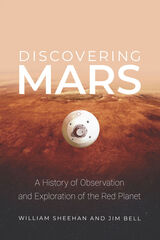
Discovering Mars
A History of Observation and Exploration of the Red Planet
William Sheehan and Jim Bell
University of Arizona Press, 2021
For millenia humans have considered Mars the most fascinating planet in our solar system. We’ve watched this Earth-like world first with the naked eye, then using telescopes, and, most recently, through robotic orbiters and landers and rovers on the surface.
Historian William Sheehan and astronomer and planetary scientist Jim Bell combine their talents to tell a unique story of what we’ve learned by studying Mars through evolving technologies. What the eye sees as a mysterious red dot wandering through the sky becomes a blurry mirage of apparent seas, continents, and canals as viewed through Earth-based telescopes. Beginning with the Mariner and Viking missions of the 1960s and 1970s, space-based instruments and monitoring systems have flooded scientists with data on Mars’s meteorology and geology, and have even sought evidence of possible existence of life-forms on or beneath the surface. This knowledge has transformed our perception of the Red Planet and has provided clues for better understanding our own blue world.
Discovering Mars vividly conveys the way our understanding of this other planet has grown from earliest times to the present. The story is epic in scope—an Iliad or Odyssey for our time, at least so far largely without the folly, greed, lust, and tragedy of those ancient stories. Instead, the narrative of our quest for the Red Planet has showcased some of our species’ most hopeful attributes: curiosity, cooperation, exploration, and the restless drive to understand our place in the larger universe. Sheehan and Bell have written an ambitious first draft of that narrative even as the latest chapters continue to be added both by researchers on Earth and our robotic emissaries on and around Mars, including the latest: the Perseverance rover and its Ingenuity helicopter drone, which set down in Mars’s Jezero Crater in February 2021.
Historian William Sheehan and astronomer and planetary scientist Jim Bell combine their talents to tell a unique story of what we’ve learned by studying Mars through evolving technologies. What the eye sees as a mysterious red dot wandering through the sky becomes a blurry mirage of apparent seas, continents, and canals as viewed through Earth-based telescopes. Beginning with the Mariner and Viking missions of the 1960s and 1970s, space-based instruments and monitoring systems have flooded scientists with data on Mars’s meteorology and geology, and have even sought evidence of possible existence of life-forms on or beneath the surface. This knowledge has transformed our perception of the Red Planet and has provided clues for better understanding our own blue world.
Discovering Mars vividly conveys the way our understanding of this other planet has grown from earliest times to the present. The story is epic in scope—an Iliad or Odyssey for our time, at least so far largely without the folly, greed, lust, and tragedy of those ancient stories. Instead, the narrative of our quest for the Red Planet has showcased some of our species’ most hopeful attributes: curiosity, cooperation, exploration, and the restless drive to understand our place in the larger universe. Sheehan and Bell have written an ambitious first draft of that narrative even as the latest chapters continue to be added both by researchers on Earth and our robotic emissaries on and around Mars, including the latest: the Perseverance rover and its Ingenuity helicopter drone, which set down in Mars’s Jezero Crater in February 2021.
[more]
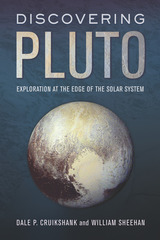
Discovering Pluto
Exploration at the Edge of the Solar System
Dale P. Cruikshank and William Sheehan
University of Arizona Press, 2018
Discovering Pluto is an authoritative account of the exploration of Pluto and its moons, from the first inklings of tentative knowledge through the exciting discoveries made during the flyby of the NASA New Horizons research spacecraft in July 2015. Co-author Dale P. Cruikshank was a co-investigator on the New Horizons mission, while co-author William Sheehan is a noted historian of the Solar System.
Telling the tale of Pluto’s discovery, the authors recount the grand story of our unfolding knowledge of the outer Solar System, from William Herschel’s serendipitous discovery of Uranus in 1781, to the mathematical prediction of Neptune’s existence, to Percival Lowell’s studies of the wayward motions of those giant planets leading to his prediction of another world farther out. Lowell’s efforts led to Clyde Tombaugh’s heroic search and discovery of Pluto—then a mere speck in the telescope—at Lowell Observatory in 1930.
Pluto was finally recognized as the premier body in the Kuiper Belt, the so-called third zone of our Solar System. The first zone contains the terrestrial planets (Mercury through Mars) and the asteroid belt; the second, the gas-giant planets Jupiter through Neptune. The third zone, holding Pluto and the rest of the Kuiper Belt, is the largest and most populous region of the solar system.
Now well beyond Pluto, New Horizons will continue to wend its lonely way through the galaxy, but it is still transmitting data, even today. Its ultimate legacy may be to inspire future generations to uncover more secrets of Pluto, the Solar System, and the Universe.
Telling the tale of Pluto’s discovery, the authors recount the grand story of our unfolding knowledge of the outer Solar System, from William Herschel’s serendipitous discovery of Uranus in 1781, to the mathematical prediction of Neptune’s existence, to Percival Lowell’s studies of the wayward motions of those giant planets leading to his prediction of another world farther out. Lowell’s efforts led to Clyde Tombaugh’s heroic search and discovery of Pluto—then a mere speck in the telescope—at Lowell Observatory in 1930.
Pluto was finally recognized as the premier body in the Kuiper Belt, the so-called third zone of our Solar System. The first zone contains the terrestrial planets (Mercury through Mars) and the asteroid belt; the second, the gas-giant planets Jupiter through Neptune. The third zone, holding Pluto and the rest of the Kuiper Belt, is the largest and most populous region of the solar system.
Now well beyond Pluto, New Horizons will continue to wend its lonely way through the galaxy, but it is still transmitting data, even today. Its ultimate legacy may be to inspire future generations to uncover more secrets of Pluto, the Solar System, and the Universe.
[more]
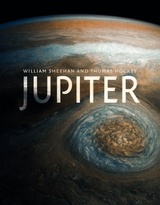
Jupiter
William Sheehan and Thomas Hockey
Reaktion Books, 2018
Now in paperback, an accessible and engaging introduction to planetary science that will deepen our knowledge both of this magnificent planet and of our own place in the solar system.
Majestic and untwinkling, Jupiter is the grandest of all planets. It is the largest planet in our solar system and among the brightest objects in the night sky. It shines with a noble, steady luster, and its calming presence has inspired humans for centuries. Jupiter was the “beloved star” of the first serious observers of the planets, the ancient Sumerians and Babylonians, and has inspired poetic utterances from eminent writers such as William Wordsworth and Walt Whitman. It also continues to inspire contemporary astronomers and stargazers, and this beautifully illustrated volume brings our understanding of Jupiter right up to date.
The scientific study of Jupiter is at a watershed: NASA’s Juno space probe has entered orbit about Jupiter to investigate the planet, while information gleaned from improved telescopes and other robotic explorers in space continues to improve our understanding of the planet’s origin, evolution, and composition. Jupiter provides a concise and expert overview of the history of our observations of this largest of planetary spheres, as well as reports on the much-anticipated initial findings from the Juno space probe.
Majestic and untwinkling, Jupiter is the grandest of all planets. It is the largest planet in our solar system and among the brightest objects in the night sky. It shines with a noble, steady luster, and its calming presence has inspired humans for centuries. Jupiter was the “beloved star” of the first serious observers of the planets, the ancient Sumerians and Babylonians, and has inspired poetic utterances from eminent writers such as William Wordsworth and Walt Whitman. It also continues to inspire contemporary astronomers and stargazers, and this beautifully illustrated volume brings our understanding of Jupiter right up to date.
The scientific study of Jupiter is at a watershed: NASA’s Juno space probe has entered orbit about Jupiter to investigate the planet, while information gleaned from improved telescopes and other robotic explorers in space continues to improve our understanding of the planet’s origin, evolution, and composition. Jupiter provides a concise and expert overview of the history of our observations of this largest of planetary spheres, as well as reports on the much-anticipated initial findings from the Juno space probe.
[more]
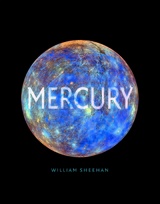
Mercury
William Sheehan
Reaktion Books, 2018
The Sun may be a mass of incandescent gas, but in the plasmatic reaches of its solar winds spins another seemingly glowing (but relatively minute) orb. The last of the five naked-eye planets discovered in ancient times, Mercury has long been an elusive, enigmatic world. As seen from the Earth, it never emerges far from the Sun, and astronomers in the telescopic era found it challenging to work out basic data such as its rotation period, the inclination of its axis, and whether or not it possessed an atmosphere.
In this fully up-to-date and beautifully illustrated account, William Sheehan describes the growth of our knowledge of planet Mercury. From the puzzles it posed for early astronomers to radar studies in the 1960s, and from the first spacecraft fly-bys by the Mariner 10 probe in the 1970s to the latest images from the Mercury Surface, Space Environment, Geochemistry, and Ranging (MESSENGER) orbital mission between 2011 and 2015, Mercury has slowly been brought into clear focus. But although we have now mapped its surface in exquisite detail, revealing strange features like volcanic plains and water-ice deposits in craters near the poles, mysteries remain—such as why its core has the highest iron content of any body of the Solar System. Rather than growing duller on closer acquaintance, this most mercurial of planets continues to fascinate us, offering important clues to scientists as they seek to better understand the origin and evolution of the Earth.
In this fully up-to-date and beautifully illustrated account, William Sheehan describes the growth of our knowledge of planet Mercury. From the puzzles it posed for early astronomers to radar studies in the 1960s, and from the first spacecraft fly-bys by the Mariner 10 probe in the 1970s to the latest images from the Mercury Surface, Space Environment, Geochemistry, and Ranging (MESSENGER) orbital mission between 2011 and 2015, Mercury has slowly been brought into clear focus. But although we have now mapped its surface in exquisite detail, revealing strange features like volcanic plains and water-ice deposits in craters near the poles, mysteries remain—such as why its core has the highest iron content of any body of the Solar System. Rather than growing duller on closer acquaintance, this most mercurial of planets continues to fascinate us, offering important clues to scientists as they seek to better understand the origin and evolution of the Earth.
[more]
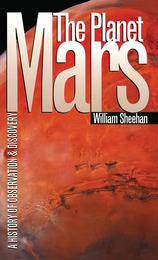
The Planet Mars
A History of Observation and Discovery
William Sheehan
University of Arizona Press, 1996
Twenty years after the Viking missions of the ’70s, we are finally going back to Mars. No fewer than ten missions are planned for the period between 1996 and 2003, and it is likely that human explorers will follow soon after--perhaps by the middle of the twenty-first century. When they do, they will owe much to the Mars of romance, to the early pioneers whose discoveries and disappointments are brought to life in The Planet Mars: A History of Observation and Discovery.
In this timely and vividly written account, William Sheehan traces human fascination with Mars back to the naked-eye observers of the planet. He recalls the early telescopic observers who first made out enigmatic markings and polar caps on its surface. Through lively historical anecdotes, he describes in detail the debate over the so-called canals of Mars, which encouraged speculation that the planet might be inhabited. Finally, Sheehan describes more recent theories about the planet, leading up to the present, when unmanned spacecraft have enabled us to make giant strides in exploration.
Well documented and sparked with human interest, this book will be a useful companion and guide in interpreting the barrage of headlines about Mars that is sure to come over the next few years. Amateurs will appreciate the contributions that have been made to Martian studies by people like themselves, and professionals will find much original material that has never before been published. The American Mars Global Surveyor is scheduled for launch in November 1996, and soon after the American Mars Pathfinder will make its way toward the red planet. A Russian mission consisting of an orbiter and two landers will be launched in October 1997. These space travelers will write a whole new chapter in the dramatic story of Mars, a planet whose exploration has only just begun. Astronomy Book Club main selection and selections of Book-of-the-Month Club and Quality Paperback Book Club.
In this timely and vividly written account, William Sheehan traces human fascination with Mars back to the naked-eye observers of the planet. He recalls the early telescopic observers who first made out enigmatic markings and polar caps on its surface. Through lively historical anecdotes, he describes in detail the debate over the so-called canals of Mars, which encouraged speculation that the planet might be inhabited. Finally, Sheehan describes more recent theories about the planet, leading up to the present, when unmanned spacecraft have enabled us to make giant strides in exploration.
Well documented and sparked with human interest, this book will be a useful companion and guide in interpreting the barrage of headlines about Mars that is sure to come over the next few years. Amateurs will appreciate the contributions that have been made to Martian studies by people like themselves, and professionals will find much original material that has never before been published. The American Mars Global Surveyor is scheduled for launch in November 1996, and soon after the American Mars Pathfinder will make its way toward the red planet. A Russian mission consisting of an orbiter and two landers will be launched in October 1997. These space travelers will write a whole new chapter in the dramatic story of Mars, a planet whose exploration has only just begun. Astronomy Book Club main selection and selections of Book-of-the-Month Club and Quality Paperback Book Club.
[more]
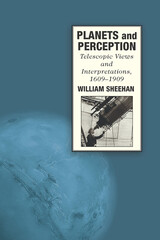
Planets and Perception
Telescopic Views and Interpretations, 1609-1909
William Sheehan
University of Arizona Press, 1988
Astronomy Book of the Year, Mercury Magazine (Astronomical Society of the Pacific)
Do we really know what we see through a telescope? How does the ocular system construct planetary images, and how does the brain interpret them? Drawing on both astronomical and psychological data, William Sheehan offers the first systematic analysis of the perceptual and cognitive factors that go into the initial structuring of a planetary image and its subsequent elaboration. Sheehan details the development of lunar and planetary astronomy, beginning with Galileo’s study of the moon, and focuses particularly on the discover of “canals” on Mars. Through each episode he underscores a perceptual or psychological theme, such as the importance of differences in vision, tachistoscopic perceptual effects, the influence of expectation and suggestion on what one sees, and the social psychology of scientific discovery. Planets and Perception is a provocative book that will intrigue anyone who has ever looked through a telescope. In addition, it offers the psychologically oriented reader a case history in the processes of perception unlike any other in the literature.
Do we really know what we see through a telescope? How does the ocular system construct planetary images, and how does the brain interpret them? Drawing on both astronomical and psychological data, William Sheehan offers the first systematic analysis of the perceptual and cognitive factors that go into the initial structuring of a planetary image and its subsequent elaboration. Sheehan details the development of lunar and planetary astronomy, beginning with Galileo’s study of the moon, and focuses particularly on the discover of “canals” on Mars. Through each episode he underscores a perceptual or psychological theme, such as the importance of differences in vision, tachistoscopic perceptual effects, the influence of expectation and suggestion on what one sees, and the social psychology of scientific discovery. Planets and Perception is a provocative book that will intrigue anyone who has ever looked through a telescope. In addition, it offers the psychologically oriented reader a case history in the processes of perception unlike any other in the literature.
[more]
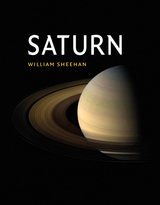
Saturn
William Sheehan
Reaktion Books, 2019
Saturn is the showpiece planet of our solar system. It may not be the largest, nor the smallest, nor even the only planet with rings. But it is among the most stunning objects in the sky and is always breathtaking when seen in a telescope.
This is a beautifully illustrated, authoritative overview of the entire history of humankind’s fascination with the ringed planet, from the first low-resolution views by Galileo, Huygens, and other early observers with telescopes to the most recent discoveries by the spacecraft Cassini, which studied the planet at close range between 2004 and 2017. Saturn describes the planet from inside out, detailing the complicated system of rings and their interaction with Saturn’s bevy of satellites, and it considers how Saturn formed and the role it played in the early history of the solar system. Featuring the latest research and a spectacular array of images, this book will appeal to anyone who has ever gazed with wonder upon the sixth planet from the sun.
This is a beautifully illustrated, authoritative overview of the entire history of humankind’s fascination with the ringed planet, from the first low-resolution views by Galileo, Huygens, and other early observers with telescopes to the most recent discoveries by the spacecraft Cassini, which studied the planet at close range between 2004 and 2017. Saturn describes the planet from inside out, detailing the complicated system of rings and their interaction with Saturn’s bevy of satellites, and it considers how Saturn formed and the role it played in the early history of the solar system. Featuring the latest research and a spectacular array of images, this book will appeal to anyone who has ever gazed with wonder upon the sixth planet from the sun.
[more]

The Space Age Generation
Lives and Lessons from the Golden Age of Solar System Exploration
William Sheehan and Klaus Brasch
University of Arizona Press, 2024
In 1957 Sputnik launched toward the stars. President Kennedy then announced that the United States would send men to the Moon and then return them to Earth.These pivotal moments sparked an unequaled bound forward in human innovation and scientific exploration.
At the heart of this momentous time were the men and women working behind the scenes. Scientists, historians, and astronomers share their memories and contributions from this unparalleled era in essays told in their own words. They are the remarkable generation who witnessed and contributed to some of space science’s most stunning achievements. Here they have recorded their memories—their childhood inspirations, their challenges, failures, and triumphs—for future generations.
A unique and authoritative record of a momentous period in human history, The Space Age Generation highlights the golden age of space exploration and the people who made it happen.
Contributors
Leo Aerts
Alexander Basilevsky
Klaus Brasch
Clark R. Chapman
Dale P. Cruikshank
William K. Hartmann
William Leatherbarrow
Baerbel Koesters Lucchitta
Yvonne Pendleton
Peter H. Schultz
William Sheehan
Paolo Tanga
Charles A. Wood
At the heart of this momentous time were the men and women working behind the scenes. Scientists, historians, and astronomers share their memories and contributions from this unparalleled era in essays told in their own words. They are the remarkable generation who witnessed and contributed to some of space science’s most stunning achievements. Here they have recorded their memories—their childhood inspirations, their challenges, failures, and triumphs—for future generations.
A unique and authoritative record of a momentous period in human history, The Space Age Generation highlights the golden age of space exploration and the people who made it happen.
Contributors
Leo Aerts
Alexander Basilevsky
Klaus Brasch
Clark R. Chapman
Dale P. Cruikshank
William K. Hartmann
William Leatherbarrow
Baerbel Koesters Lucchitta
Yvonne Pendleton
Peter H. Schultz
William Sheehan
Paolo Tanga
Charles A. Wood
[more]
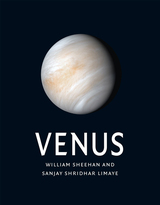
Venus
William Sheehan and Sanjay Shridhar Limaye
Reaktion Books, 2022
From the latest scientific advances to observation advice for amateur astronomers, a beautifully illustrated exploration of one of Earth’s closest neighbors.
This book is a new, beautifully illustrated account of Venus, taking in the most recent research into this mysterious, inhospitable world. The book looks at the history of our observations of the planet, from early astronomy to future space missions, and seeks to shed light on many of the questions that remain unanswered, such as why Venus and the Earth—so similar in size and mass—evolved in such different directions, and how Venus acquired its dense carbon-dioxide atmosphere. Above all, Venus assesses whether life might have escaped from the oven-like temperatures at the surface and evolved to become perpetually airborne—in which case Venus may not be lifeless after all.
This book is a new, beautifully illustrated account of Venus, taking in the most recent research into this mysterious, inhospitable world. The book looks at the history of our observations of the planet, from early astronomy to future space missions, and seeks to shed light on many of the questions that remain unanswered, such as why Venus and the Earth—so similar in size and mass—evolved in such different directions, and how Venus acquired its dense carbon-dioxide atmosphere. Above all, Venus assesses whether life might have escaped from the oven-like temperatures at the surface and evolved to become perpetually airborne—in which case Venus may not be lifeless after all.
[more]

Worlds in the Sky
Planetary Discovery from Earliest Times Through Voyager and Magellan
William Sheehan
University of Arizona Press, 1992
Ever since early stargazers discovered that some heavenly bodies wandered among the others, people have been fascinated by the planets. Kepler calculated their orbits from naked-eye observations; Galileo’s telescope made it possible to discern their markings; now observations from spacecraft provide electronically enhanced images that bring these distant worlds even closer.
In Worlds in the Sky, William Sheehan gives us a history of this long fascination, weaving together scientific history, anecdotes surrounding planetary discoveries, and the personal reflections of an incurable amateur astronomer. He describes how we arrived at our current understanding of the Moon and the planets and shows how certain individuals in history shaped the world’s knowledge about the Solar System.
In Worlds in the Sky, William Sheehan gives us a history of this long fascination, weaving together scientific history, anecdotes surrounding planetary discoveries, and the personal reflections of an incurable amateur astronomer. He describes how we arrived at our current understanding of the Moon and the planets and shows how certain individuals in history shaped the world’s knowledge about the Solar System.
[more]
READERS
Browse our collection.
PUBLISHERS
See BiblioVault's publisher services.
STUDENT SERVICES
Files for college accessibility offices.
UChicago Accessibility Resources
home | accessibility | search | about | contact us
BiblioVault ® 2001 - 2024
The University of Chicago Press









